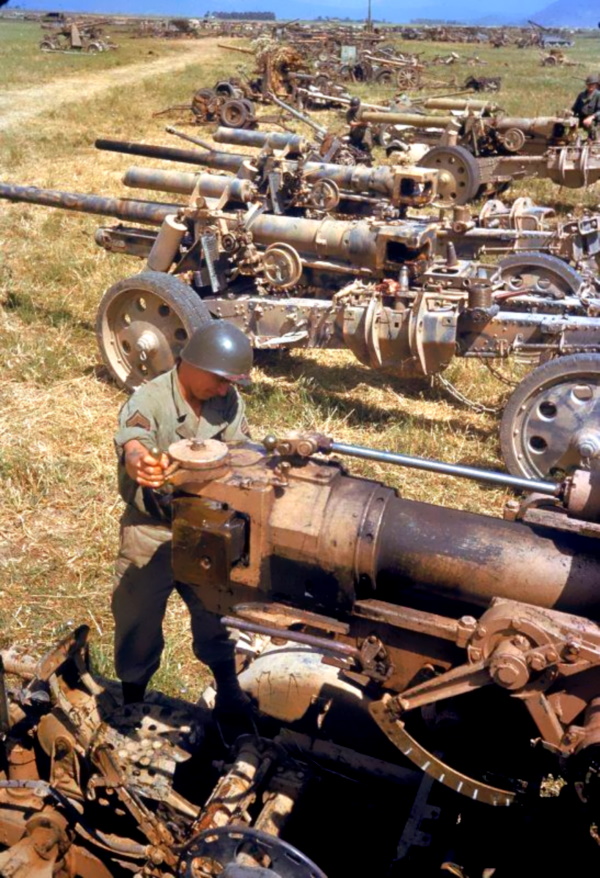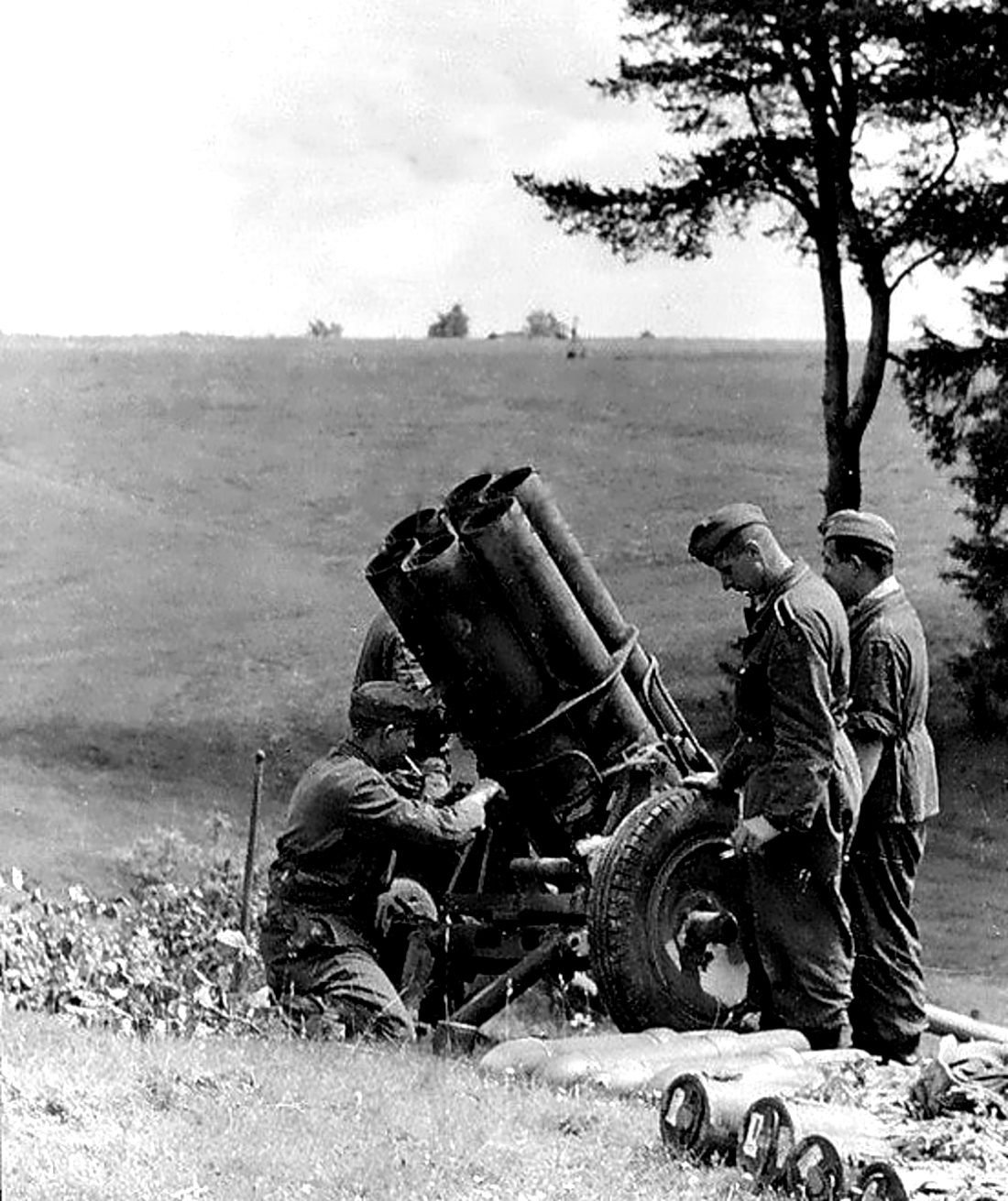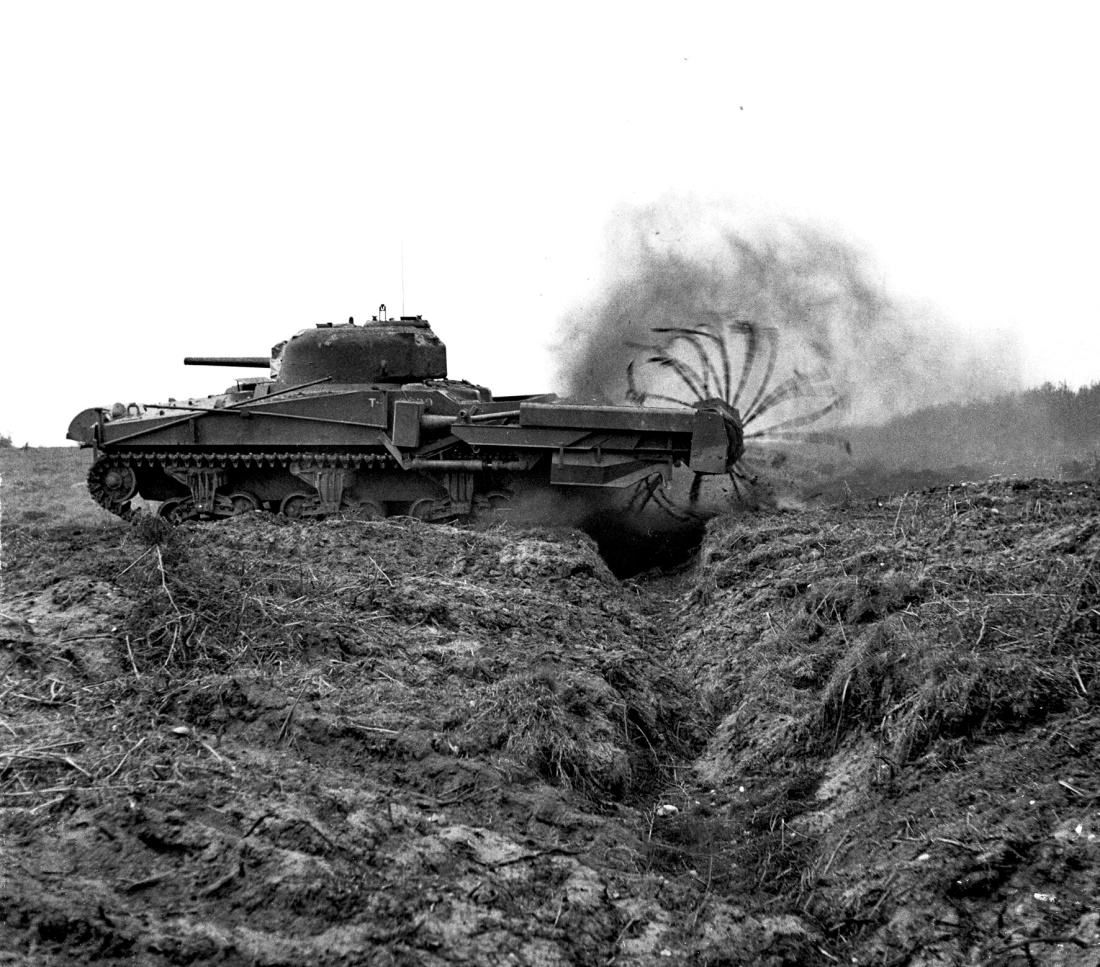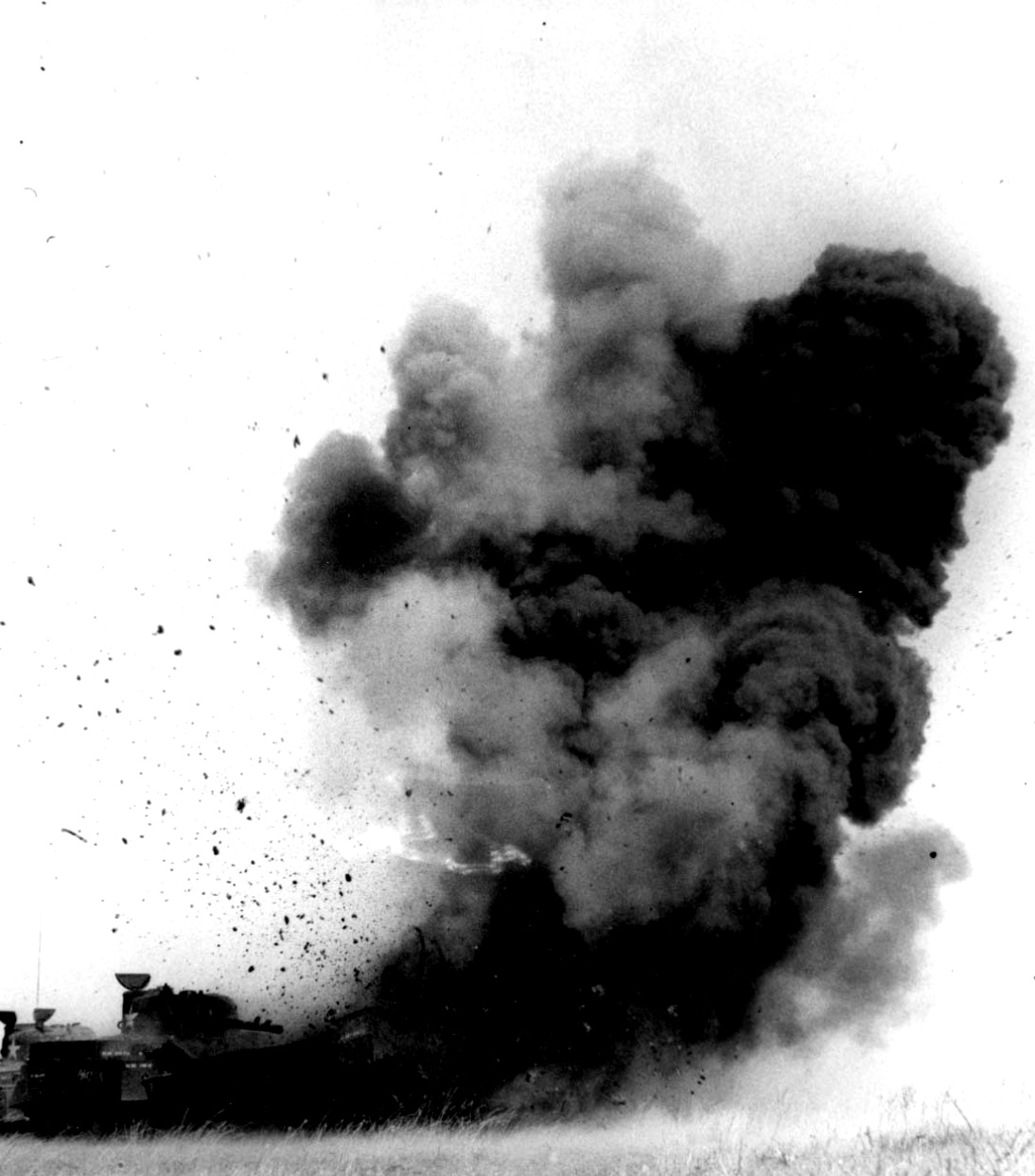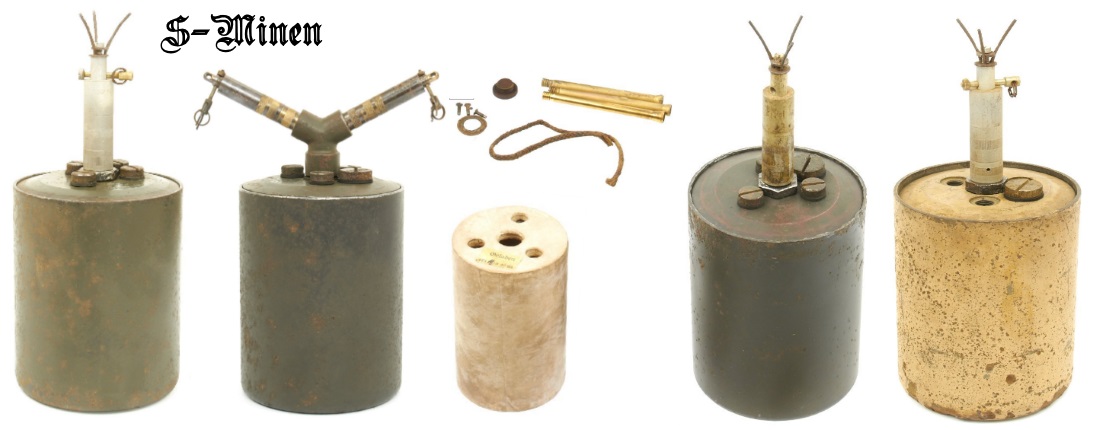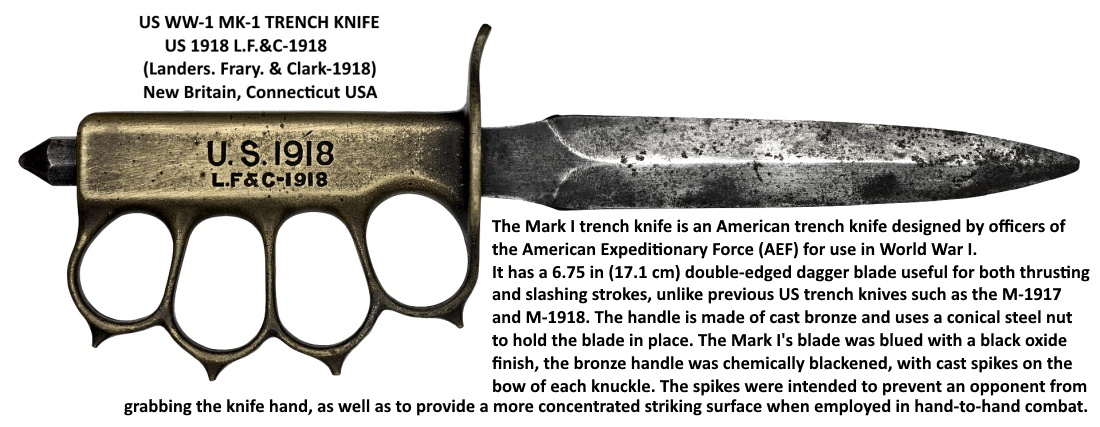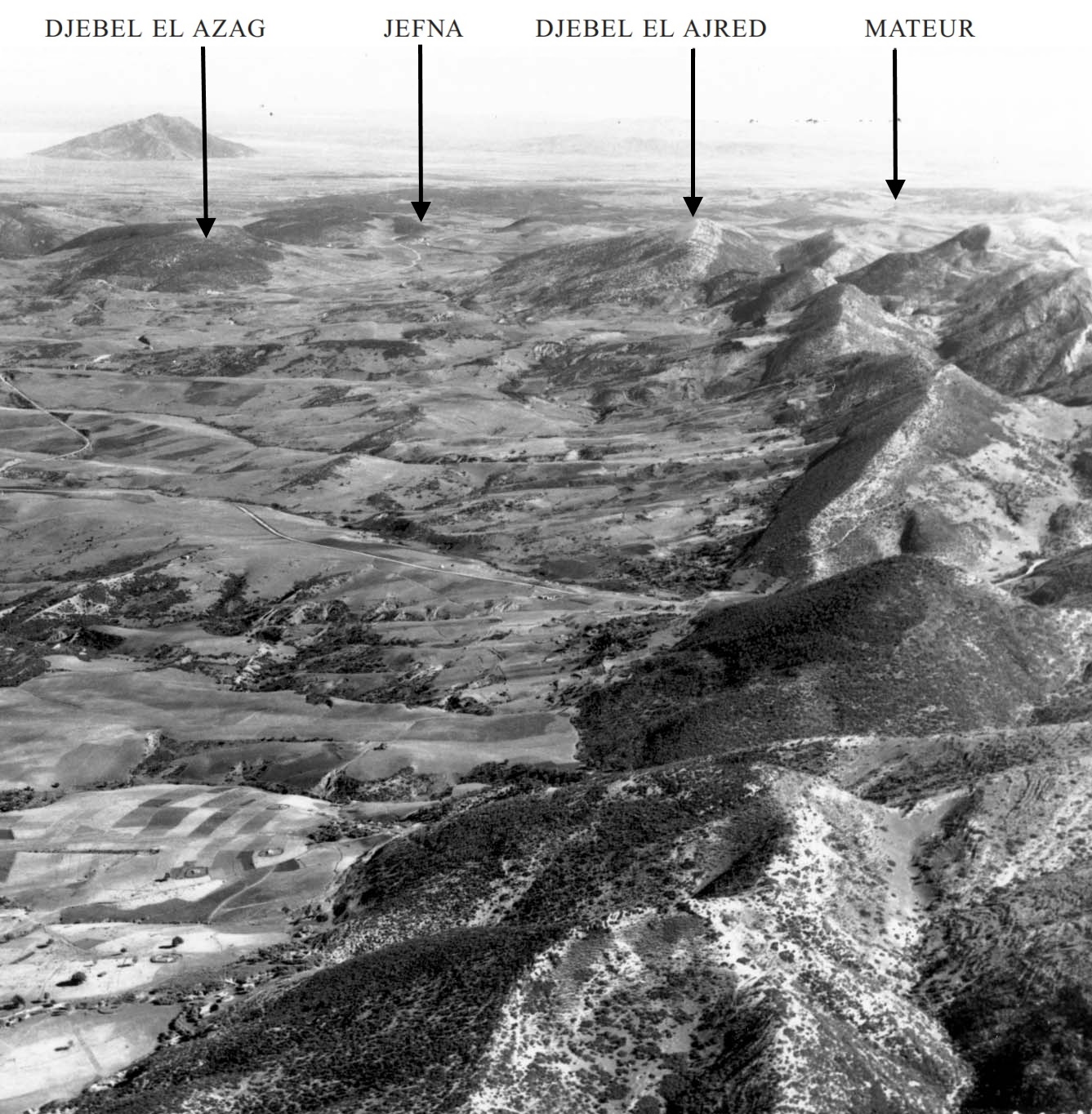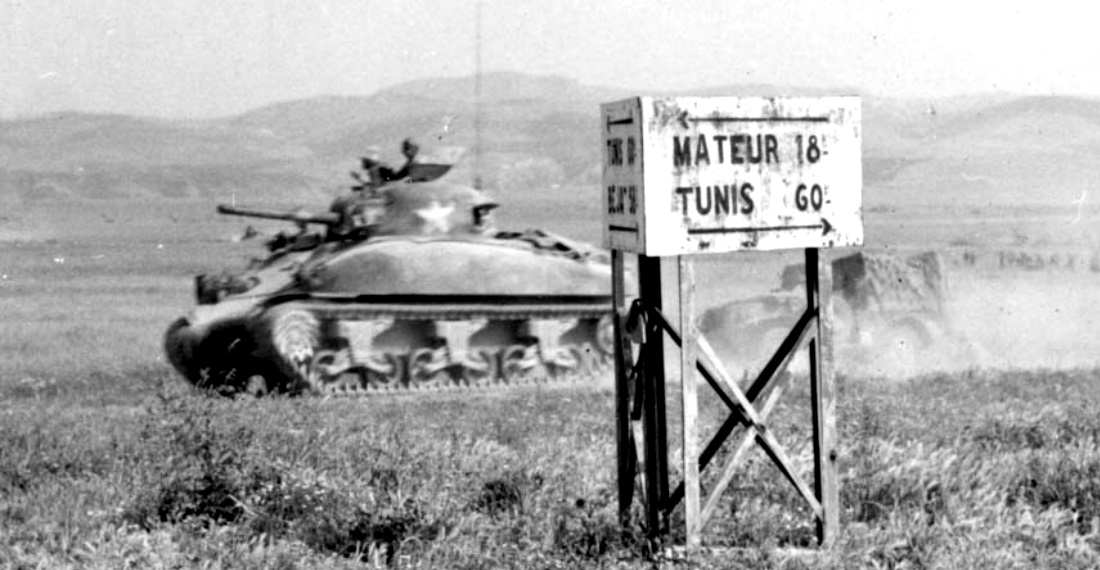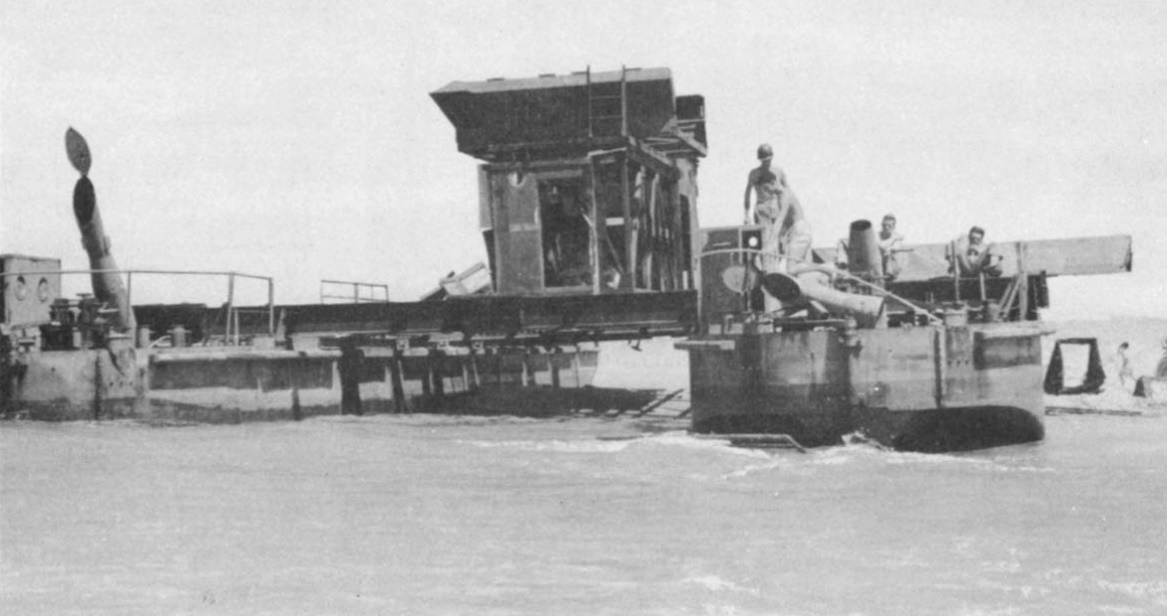(Above and Below) German Six-Barreled Rocket Launcher. This weapon fired high explosive, incendiary, or smoke rockets and was light enough to be moved with ease. The screaming sound of the rockets had an adverse psychological effect on troops at the receiving end and the rockets were nicknamed ‘Screaming Meemies’. Artillery sound-ranging equipment could not locate the rocket launchers because firing did not cause a report. The enemy used this type of weapon until the end of the war. (15-cm Nebelwerfer 41)
(Above and Below) Sherman Tank & Scorpion Attachment. The Scorpion was a revolving drum with chains attached (insert); when in motion it acted as a flail and could clear a path through a minefield for infantry and other tanks to follow. It was developed by the British and used extensively by them in desert warfare.
The German S-Mine. This German antipersonnel mine was used profusely and very effectively in Tunisia. It was nicknamed the Bouncing Betty because when stepped on it would bounce a few feet in the air before a secondary fuze set off the main explosive charge scattering some three hundred steel balls in all directions. The suspected presence of these mines naturally retarded troop movements during an advance. When retreating, the enemy would frequently use this mine to booby-trap buildings, dugouts, or equipment left behind.
Djebel Tahent in Northern Tunisia, known as Hill 609. The British Eighth Army advancing northward along the coast replaced the US II Corps in the Gafsa–Gabès area in April 1943. The corps then moved northward about 150 miles and went into position from Béja to Cap Serrat. French forces along this coast came under US II Corps, which advanced in two groups, a northern wing astride the Sedjenane road and a southern wing along the Béja road, both converging on Mateur. The hill shown above was a natural fortress blocking the approach to the plains of Mateur. On April 28, 1943, artillery pounded enemy positions and on the next day, the infantry attack started. After a three-day infantry fight, supported by tanks, the hill fell on May 1.
Jefna Area, Looking East to the Plains of Mateur. The Jefna position, on the Sedjenane-Mateur road, was one of the strongest German defenses in northern Tunisia and included two heavily fortified hills commanding the road to Mateur: Djebel Azag (Green Hill) on the north and Djebel el Ajred (Bald Hill) on the south. On April 13, 1943, US forces relieved the British and took positions on both sides of the road and the mountains along the valley. The fight for the two hills lasted until May 3, when the Jefna positions were outflanked by US and French forces advancing toward Bizerte and the Mateur plain north of Jefna.
(Above and Below) Infantry and Armor advancing on Mateur. After the fall of Hill 609 the enemy pulled back leaving the road to Mateur open. This small village in the middle of a plain was the center of enemy road communications in the US zone of attack. Its occupation on May 3, opened the way for the advance on Bizerte, the main objective of the US-French drive. (Below) US Medium Tank Sherman M-4A1).
(Abobe and Below) German Siebel Ferries. These diesel-powered, ponton-raft ferries were used to transport supplies from Italy and Sicily. They usually traveled in convoys and were often heavily armed with 88-MM antiaircraft guns when moving toward Tunisia as well as with the lighter protection that they retained for the return trip. Of shallow draft, they could unload directly onto the beach, a factor which became especially important after the Allies had gained control of the air and subjected the Tunisian ports to the severe bombing.
